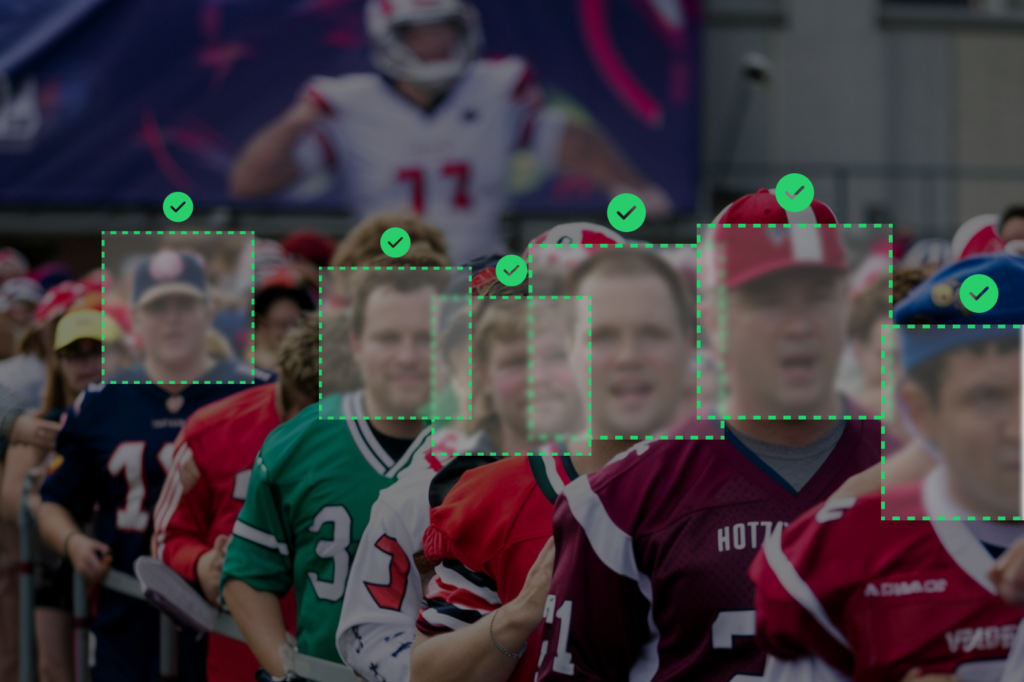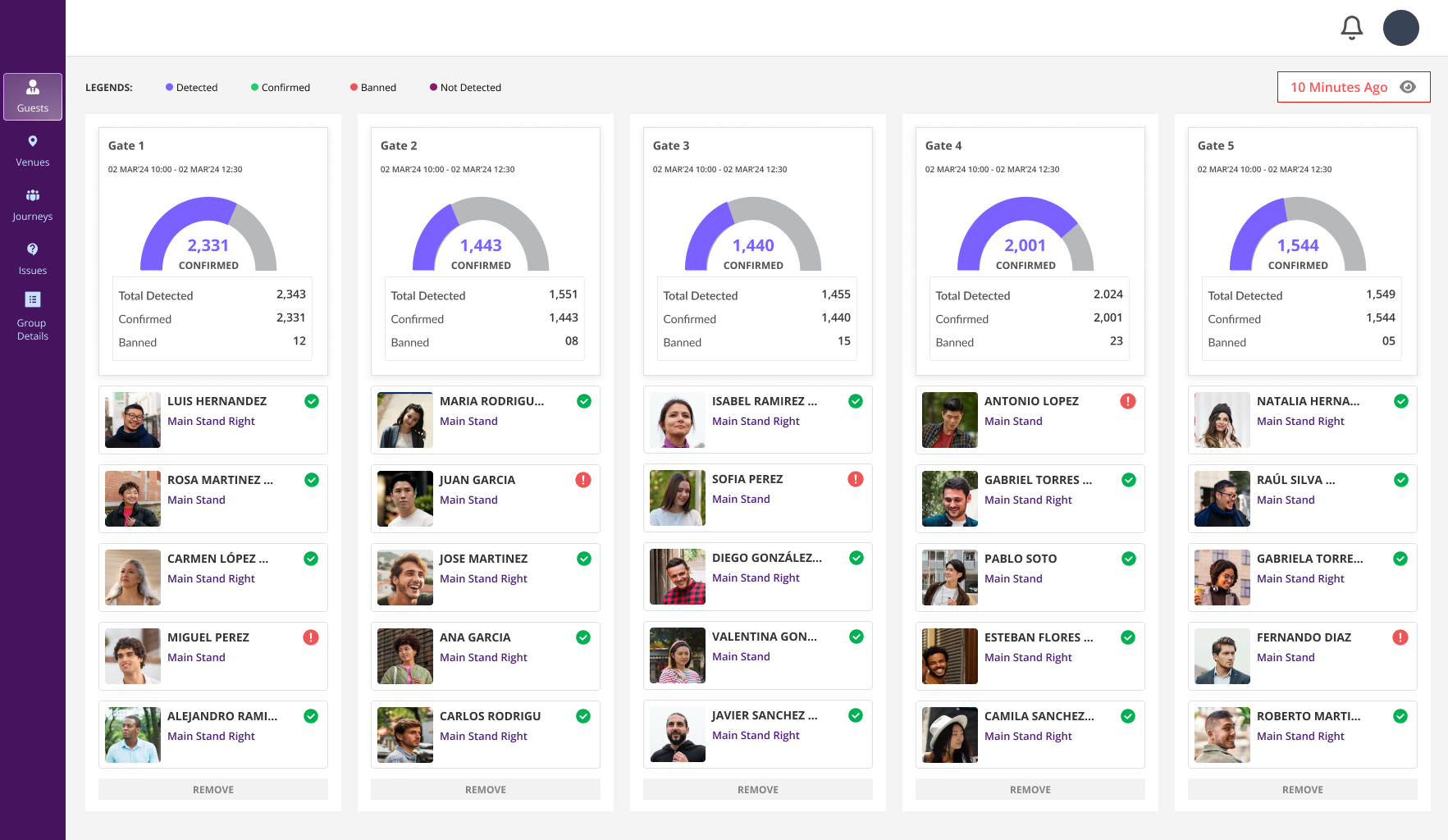As technology continues to advance, stadiums around the world are embracing innovations that promise to enhance the fan experience. One of the latest trends revolutionizing the way we attend live events is the introduction of fast lane tickets powered by facial recognition technology. This cutting-edge solution not only aims to streamline entry processes but also offers a glimpse into a future where convenience and security are seamlessly integrated.
What Are Fast Lane Tickets?
Fast lane tickets, as the name suggests, are designed to provide ticket holders with a quicker and smoother entry into stadiums and other large venues. These tickets leverage facial recognition technology to eliminate the need for traditional tickets, whether paper or digital. Instead, your face becomes your ticket.
The concept is simple: once fans purchase a fast lane ticket, they upload a selfie or provide a photo during registration. On game day, high-tech cameras installed at the venue’s gates scan fans’ faces and match them with the pre-registered photos, granting them swift access without the hassle of scanning barcodes, fumbling with physical tickets, or showing ID.

How Does Facial Recognition Work?
Facial recognition technology works by analyzing unique facial features, including the distance between the eyes, nose, and mouth. These features are converted into a unique numerical code, which is then compared to the stored database. When a match is found, the fan is granted entry, making the process both contactless and fast.
Here’s a step-by-step breakdown:
- Pre-Event Registration: Fans upload a clear photo when they buy their tickets.
- Facial Data Storage: The stadium stores the facial data securely in a database.
- Facial Scan at the Gate: Upon arrival, fans simply approach the facial recognition cameras at the fast lane gates.
- Instant Verification: The system compares the face to the stored data, and if it matches, the fan is granted access almost instantly.
Benefits of Fast Lane Tickets with Facial Recognition
- Speed and Efficiency: Long lines are a common frustration at stadiums, especially during high-profile events. Facial recognition fast lane tickets can significantly reduce wait times, allowing fans to get to their seats quickly without the stress of missing key moments of the game or concert, not only enhances convenience but also minimizes potential health risks.
- Enhanced Security: Stadium security is a major concern, especially for large-scale events. Facial recognition adds an additional layer of safety by preventing ticket fraud or duplication. Only those whose facial data matches their registered ticket will gain access, reducing the risk of unauthorized entry.
- Personalized Experiences: The use of facial recognition technology opens the door to more personalized experiences within the stadium. For example, once inside, fans could receive tailored offers based on their preferences, like discounts at concession stands or exclusive merchandise offers.

Challenges and Concerns
Despite the obvious benefits, the use of facial recognition technology in stadiums also raises several concerns, particularly around privacy and data security. Many fans worry about the potential misuse of their biometric data or the risk of it being hacked.
- Data Privacy: One of the biggest concerns with facial recognition is how personal data is collected, stored, and used. Fans need assurance that their facial data will be handled with the highest level of security and used strictly for the purpose of ticket validation.
- Surveillance Fears: The increasing use of facial recognition in public spaces has led to concerns about mass surveillance. Fans may be wary of being constantly monitored, even if it’s for a smoother experience.
- Accuracy Issues: While facial recognition technology has come a long way, it’s not perfect. There are still concerns over accuracy, especially in cases where lighting conditions, hats, or even changes in appearance (such as facial hair) could cause misidentification.
Overcoming the Challenges
To address these concerns, stadiums and technology providers collaborate on several approaches:
- Transparency: Clear communication about how facial data is collected, stored, and used can alleviate privacy concerns. Fans need to know that their data won’t be shared with third parties without consent.
- Data Encryption: Advanced encryption methods ensure that stored facial data is safe from cyber threats.
- Opt-In Systems: Making facial recognition an optional service allows fans who value convenience to opt in, while others can stick to traditional ticketing methods.
Neoma Success story:
Discover how we have helped a football league streamline the fan identity verification process and access control with our Fan ID combined with real-time facial recognition.
Key figures:
- the automated Fan ID verification process is 50x more efficient than manual checks (0.6 sec per fan)
- detection of all banned fans with 100% accuracy
- digital Fan ID matches fan selfie with national ID across 13,000+ ID templates issued in 247 countries and territories
Conclusion
Fast lane tickets using facial recognition are undoubtedly a game-changer for the stadium experience, offering unparalleled convenience, security, and speed. While concerns around privacy and security persist, the technology has the potential to transform how we attend live events, making long lines and ticket mishaps a thing of the past. As stadiums continue to innovate, it’s clear that facial recognition is poised to become a cornerstone of modern fan experiences.
With a careful balance between convenience and security, this innovation could pave the way for a future where attending a game or concert feels as seamless as the entertainment itself.
Interested in learning more? Talk to Neoma Sales today.







